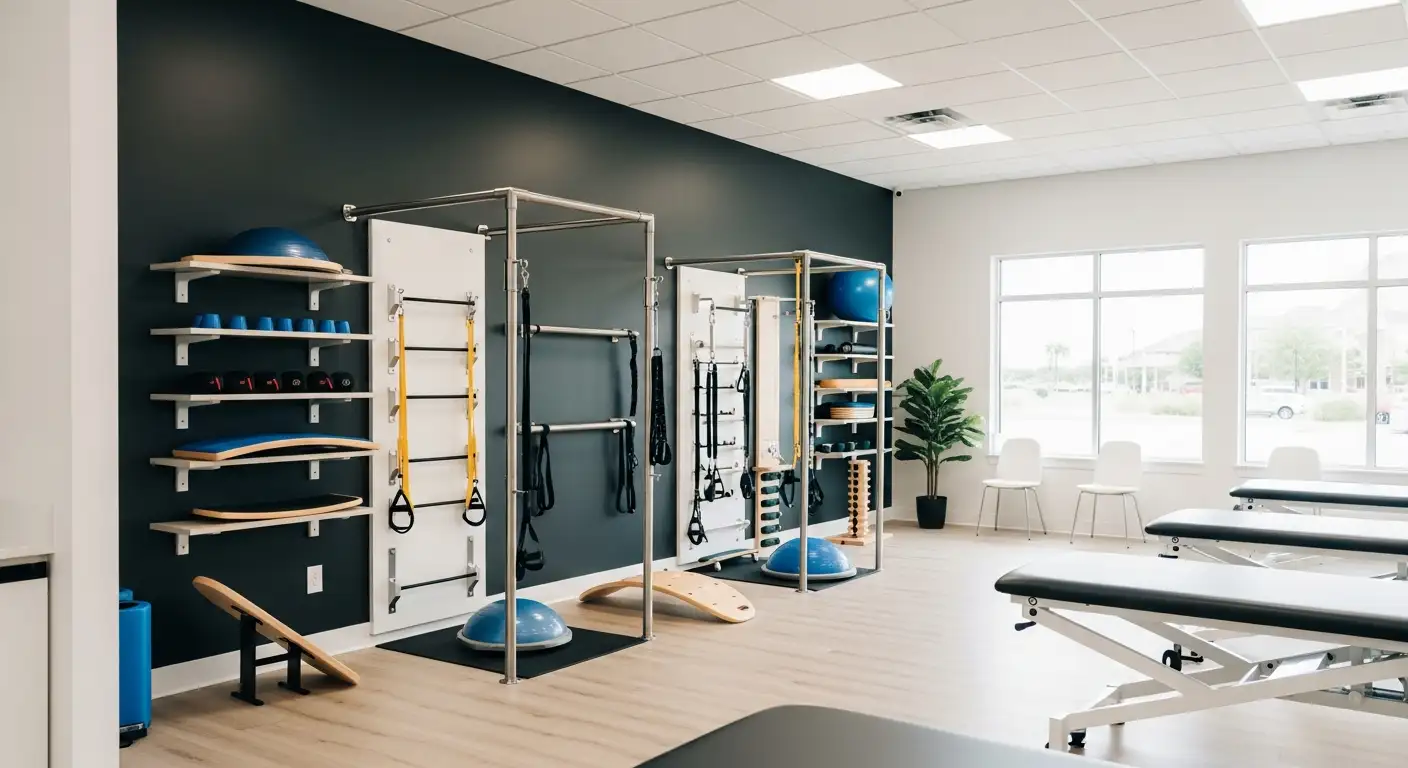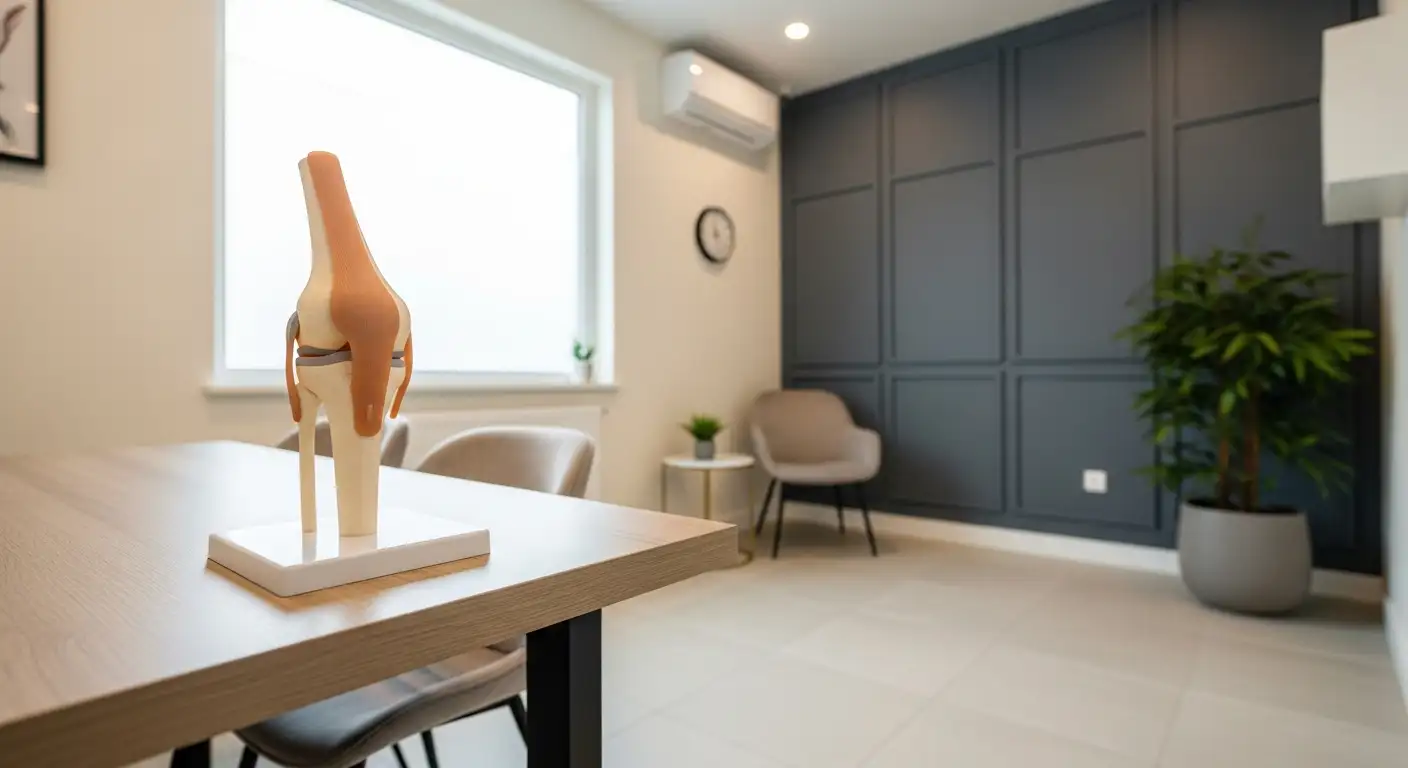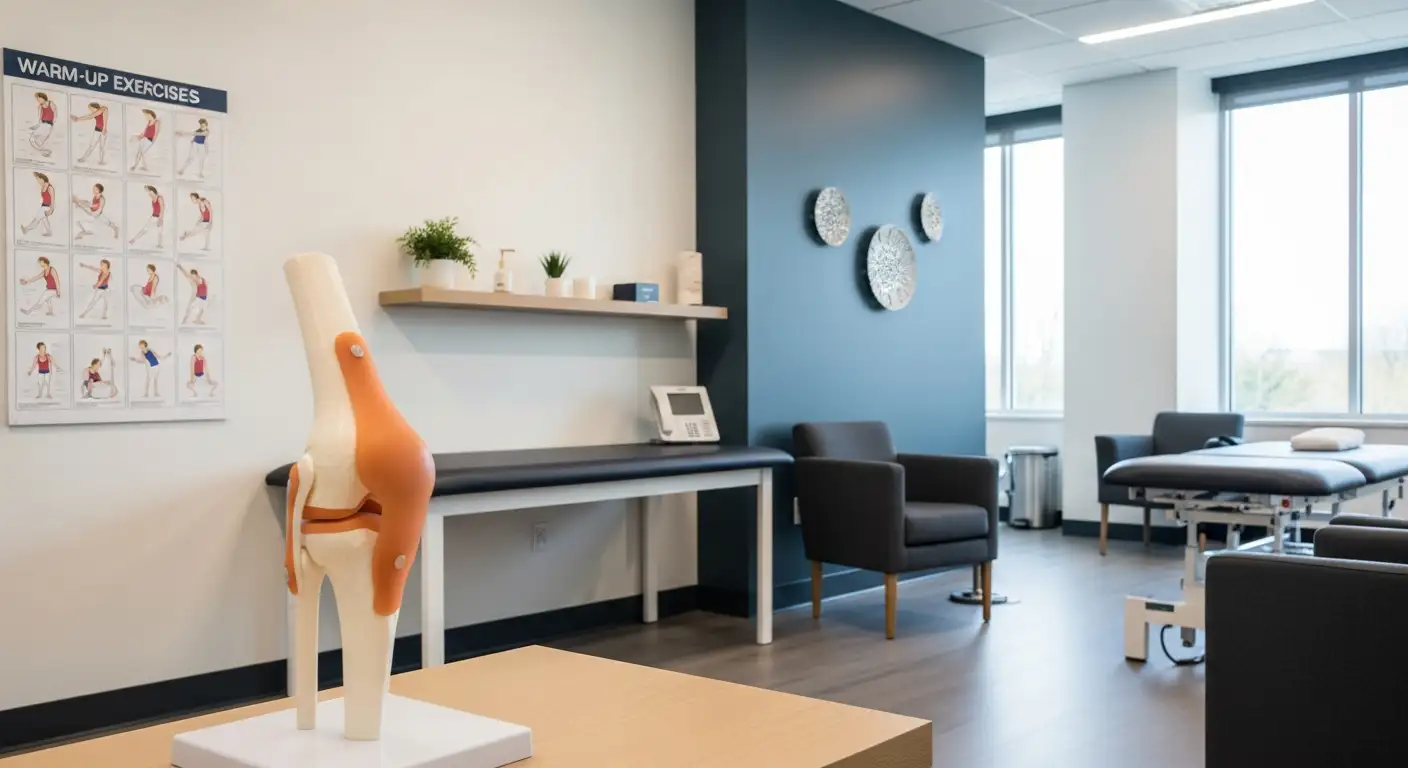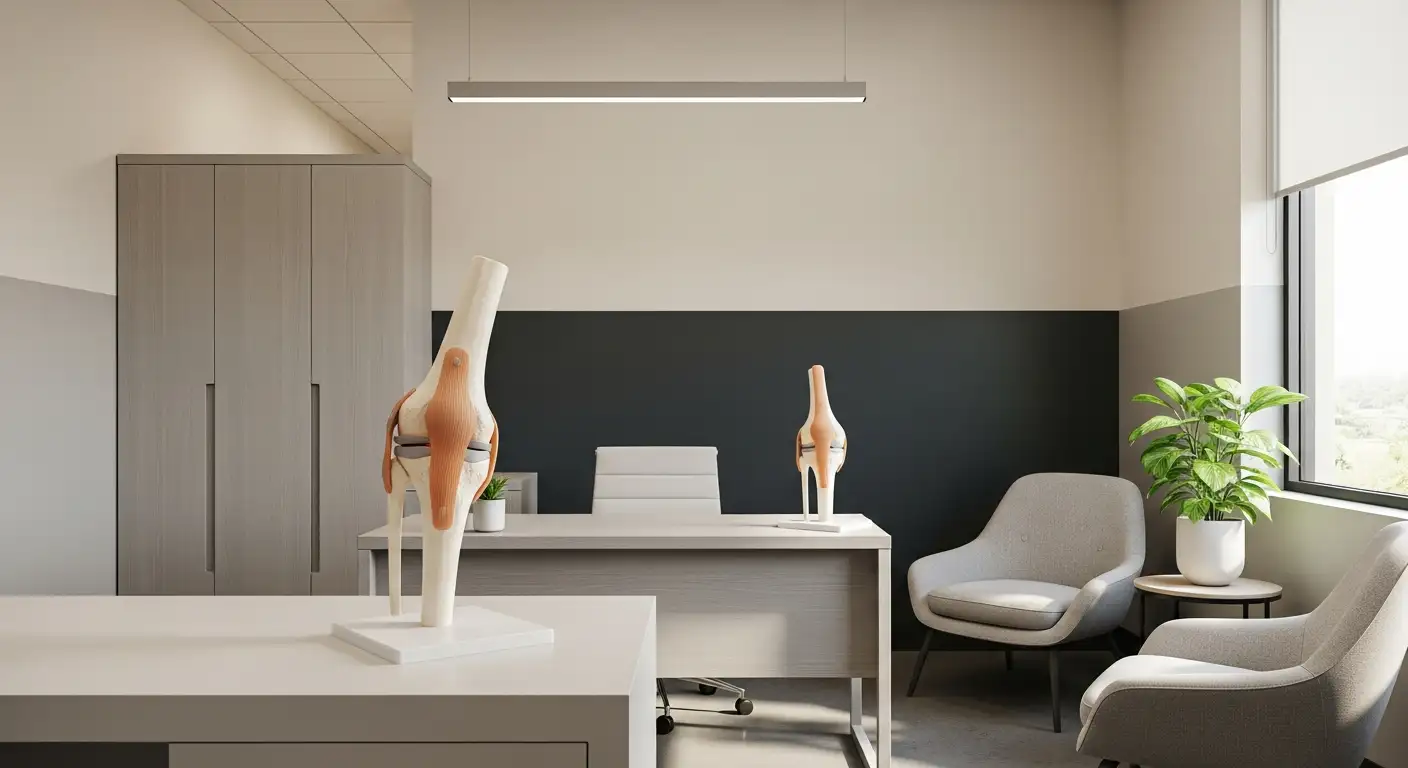Understanding Knee Pain After Surgery
When it comes to knee pain after surgery, particularly Total Knee Arthroplasty (TKA), it's crucial to understand the factors contributing to chronic pain and the psychological impact it can have on patients. Approximately 20-30% of patients report enduring pain for months to years after knee replacement surgery, leading to diminished quality of life and functional impairments. These patients are at higher risk of reporting poor physical and psychological health.
Factors Contributing to Chronic Pain
Chronic pain after TKA can affect all dimensions of health-related quality of life and is associated with functional limitations, depression, anxiety, poorer general health, sleep problems, and long-term opioid use. It's also associated with reduced work productivity and may impact a person's ability to participate in paid employment [2].
Chronic pain management accounts for 4.6 million general practitioner appointments per year in the UK with a cost of around £69 million. In England, over 66 million prescriptions for analgesic drugs were issued in 2005, costing £510 million. Despite the importance of effective pain management, there is a lack of evidence-based recommendations to guide clinical decisions around the optimal management of chronic pain after TKA. Treatment of chronic pain is challenging, and evaluation of combined treatments and individually targeted treatments matched to patient characteristics is advocated.
Psychological Impact on Pain
The psychological state of a patient can significantly influence the experience of post-surgical knee pain. Preoperative depression is associated with adverse outcomes following knee replacement surgery, including higher levels of knee disability and stiffness, worse pain and function, smaller improvements in pain and function, longer hospital stays, and poorer engagement in postoperative rehabilitation [1].
Patients with preoperative anxiety are at greater risk of adverse outcomes following knee replacement surgery, including chronic pain, higher pain severity, lower function, greater pain intensity, and increased healthcare utilization.
Pain catastrophizing, or magnifying and excessively focusing on pain-related stimuli, is strongly related to adverse outcomes following knee replacement surgery, including higher pain severity, lower function, longer time to achieve a 90-degree bend, and poorer knee function after surgery.
On the positive side, psychological resilience, characterized by factors such as self-efficacy, effective engagement with social support networks, perseverance, positive emotions, optimism, acceptance, and psychological flexibility, may buffer the impact of psychological vulnerabilities on postoperative outcomes following knee replacement surgery. Resilience is associated with better mental health-related quality of life, lower levels of anxiety and depression, and higher levels of functional independence [1].
Types of Knee Implants
Understanding the types of knee implants can help one gain insight into what causes pain years after knee replacement. There are several types of knee implants, each with their own unique benefits and potential challenges.
Metal-on-Plastic Implants
Metal-on-plastic knee implants are the most common type of knee implant. They have the longest track record for safety and implant lifespan Harvard Health Publishing. However, an immune reaction can be triggered by tiny particles that wear away from the plastic spacer. This reaction can cause bone breakdown, leading to implant loosening and failure. However, advances in manufacturing have significantly reduced the rate of wear in plastic spacers, decreasing the likelihood of immune reactions triggered by plastic particles Harvard Health Publishing.
Ceramic-on-Metal Implants
Ceramic-on-metal and metal-on-metal knee implants have been used less frequently due to concerns over traces of metal leaking into the bloodstream, which can lead to inflammation, pain, and potential organ damage Harvard Health Publishing.
Metal-on-Metal Implants
Metal-on-metal implants were originally developed to provide longer-lasting joint replacements for younger individuals. They may be considered for young, active men as they might last longer than other materials, but women of childbearing age cannot receive these implants due to unknown effects on a fetus Harvard Health Publishing.
Ceramic Joint Prostheses
Ceramic joint prostheses can sometimes make a squeaking noise when walking and in rare cases, they can shatter under heavy pressure into pieces that require surgical removal Harvard Health Publishing.
In conclusion, each type of implant comes with its own set of advantages and potential complications. It's crucial to understand these factors when looking at the possible causes of pain following knee replacement surgery.
Complications After Knee Replacement
While knee replacement surgery is generally a successful procedure, some individuals may experience complications post-surgery. These complications can include infections, wound complications, nerve, blood vessel, and ligament damage, and blood clots or deep vein thrombosis (DVT). These complications could potentially answer the question of 'what causes pain years after knee replacement'.
Infections and Wound Complications
Infections are a possible complication following knee replacement surgery. They can occur in the wound or deep within the knee joint. Infections usually need to be treated with antibiotics, and in severe cases, further surgery may be needed.
Signs of infection include fever, redness, warmth, and drainage from the surgical site. If you notice any of these symptoms post-surgery, seek medical attention immediately.
Nerve, Blood Vessel, and Ligament Damage
Damage to the nerves, blood vessels, or ligaments around the knee joint is another potential complication of knee replacement surgery. While not common, these types of injuries can occur during the procedure and may require repair during or after surgery.
Such damage can result in symptoms like pain, numbness, or weakness and may require further treatment or surgery.
Blood Clots and Deep Vein Thrombosis
Blood clots, including deep vein thrombosis (DVT), are possible complications following knee replacement surgery. These clots can cause pain or swelling and could become serious if they move to the lungs, causing a pulmonary embolism [3].
Treatment may involve anticoagulant medicines to prevent serious complications. Other preventive measures include compression stockings and early mobilization.
If you're experiencing persistent pain after your knee replacement surgery, it's important to consult with your doctor. They can help determine the cause of your pain and discuss appropriate treatment options. Understanding potential complications can also help in managing expectations and taking preventive measures in the post-surgery period.
Causes of Persistent Knee Pain
While knee replacement surgery typically provides significant relief from chronic knee pain, in some cases, discomfort may persist post-surgery. Understanding what causes pain years after knee replacement can help patients and healthcare providers better manage these situations. Here we'll explore three potential causes: component malpositioning, polyethylene wear and osteolysis, and patellar maltracking.
Component Malpositioning
Component malpositioning in total knee replacement (TKR) can lead to instability, increased risk of polyethylene wear, and pain. Specifically, internal rotation of the femoral implant component may contribute to patellofemoral pain syndrome [4].
According to a retrospective study, 22.3% of cases of unexplained chronic knee pain following TKR were due to loosening in the tibia and femoral components. Additionally, 1.8% were due to placement error from rotational problems, which could potentially lead to component malpositioning [4].
Polyethylene Wear and Osteolysis
Polyethylene wear of the TKR articulating surfaces is another common cause of persistent knee pain after surgery. This wear can result in osteolysis and painful synovitis.
The retrospective study also found that 8.0% of cases of unexplained chronic knee pain following TKR were due to polyethylene wear. This highlights the importance of regular check-ups and scans to monitor the condition of the TKR components over time.
Patellar Maltracking
Patellar maltracking, which results from an imbalance in the relationship between the trochlea and patella, can lead to pain and contribute to patellofemoral cartilage damage and osteoarthritis.
In the mentioned study, 33.9% of cases of unexplained chronic knee pain following TKR were due to periarticular involvement with quadricep deficiency, iliotibial tendinitis, pes bursitis, stiffness or prepatellar bursitis. While not all these conditions are directly related to patellar maltracking, they do involve issues with the knee's surrounding structures, which can indirectly lead to patellar maltracking.
Understanding these potential causes of persistent knee pain after replacement surgery can help guide effective treatment strategies and lead to improved patient outcomes. However, it's essential for patients to communicate with their healthcare providers about their symptoms to ensure optimal care.
Management of Chronic Knee Pain
Despite the majority of individuals experiencing significant relief from knee pain after replacement surgery, a small percentage continue to struggle with persistent discomfort. In such cases, an array of management strategies can be employed to alleviate the chronic knee pain.
Minimally Invasive Procedures
Minimally invasive procedures have shown promising results in reducing chronic knee pain after surgery, especially for patients who are not ideal candidates for further surgical intervention or those where knee pain persists post-surgery. These procedures, which cause less damage to the tissues surrounding the knee, have been demonstrated to reduce recovery time, minimize postoperative pain, and increase the range of motion after surgery.
New Interventions like Nerve Ablation
Another avenue for managing chronic knee pain includes new interventions such as nerve ablation. This technique involves interrupting the nerve pathways that transmit pain signals from the knee to the brain, resulting in decreased knee discomfort.
Dorsal Root Ganglion Stimulation
Dorsal root ganglion stimulation is another promising approach for the relief of chronic knee pain after replacement surgery. This method involves the implantation of a device beneath the skin that connects to multiple leads. These leads generate electrical impulses that interfere with the transmission of pain signals to the brain, resulting in decreased chronic pain [5].
Pain Management Approaches
Finally, pain management approaches can be utilized to help manage chronic knee pain. These strategies can include a combination of medications, physical therapy, lifestyle modifications, and other non-invasive treatments. However, it's important to note that the treatment of chronic pain is challenging, and the evaluation of combined treatments and individually targeted treatments matched to patient characteristics is advocated.
Understanding the various options for managing chronic knee pain can assist individuals in making informed decisions about their care. It's important to have open and honest discussions with healthcare providers about the potential benefits and risks associated with each approach, considering personal health circumstances and preferences.
Psychological Factors and Pain
While physical complications can be the culprits behind persistent knee pain after replacement surgery, psychological factors also play a substantial role. These factors include depression, anxiety, pain catastrophizing, and psychological resilience. Understanding these elements is crucial when exploring the question of what causes pain years after knee replacement.
Impact of Depression and Anxiety
Depression and anxiety are two common psychological issues that may impact the outcome of knee replacement surgery. Preoperative depression is linked to adverse outcomes following this procedure, including higher levels of knee disability and stiffness, worse pain and function, smaller improvements in pain and function, longer hospital stays, and poorer engagement in postoperative rehabilitation.
Similarly, patients with preoperative anxiety are more prone to adverse outcomes, including chronic pain, higher pain severity, lower function, greater pain intensity, and increased healthcare utilization.
Pain Catastrophizing
Pain catastrophizing is a psychological response where an individual magnifies and excessively focuses on pain-related stimuli. This response is strongly related to adverse outcomes following knee replacement surgery. These outcomes include higher pain severity, lower function, longer time to achieve a 90-degree bend, and poorer knee function after surgery [1].
Psychological Resilience
On a more positive note, psychological resilience can buffer the impact of psychological vulnerabilities on postoperative outcomes. Characterized by factors such as self-efficacy, effective engagement with social support networks, perseverance, positive emotions, optimism, acceptance, and psychological flexibility, resilience is associated with better mental health-related quality of life, lower levels of anxiety and depression, and higher levels of functional independence.
Addressing these psychological factors, along with careful medical management, can significantly enhance the quality of life for individuals experiencing persistent knee pain after replacement surgery. Therefore, an integrative approach that considers both physical and psychological factors is essential for the effective management of chronic knee pain.
References
[1]: https://www.ncbi.nlm.nih.gov/pmc/articles/PMC7326061/
[2]: https://www.ncbi.nlm.nih.gov/pmc/articles/PMC6134884/
[3]: https://orthoinfo.aaos.org/en/treatment/total-knee-replacement/
[4]: https://www.ncbi.nlm.nih.gov/pmc/articles/PMC7528670/
[5]: https://newsnetwork.mayoclinic.org/discussion/mayo-clinic-q-and-a-pain-after-knee-replacement-surgery/





